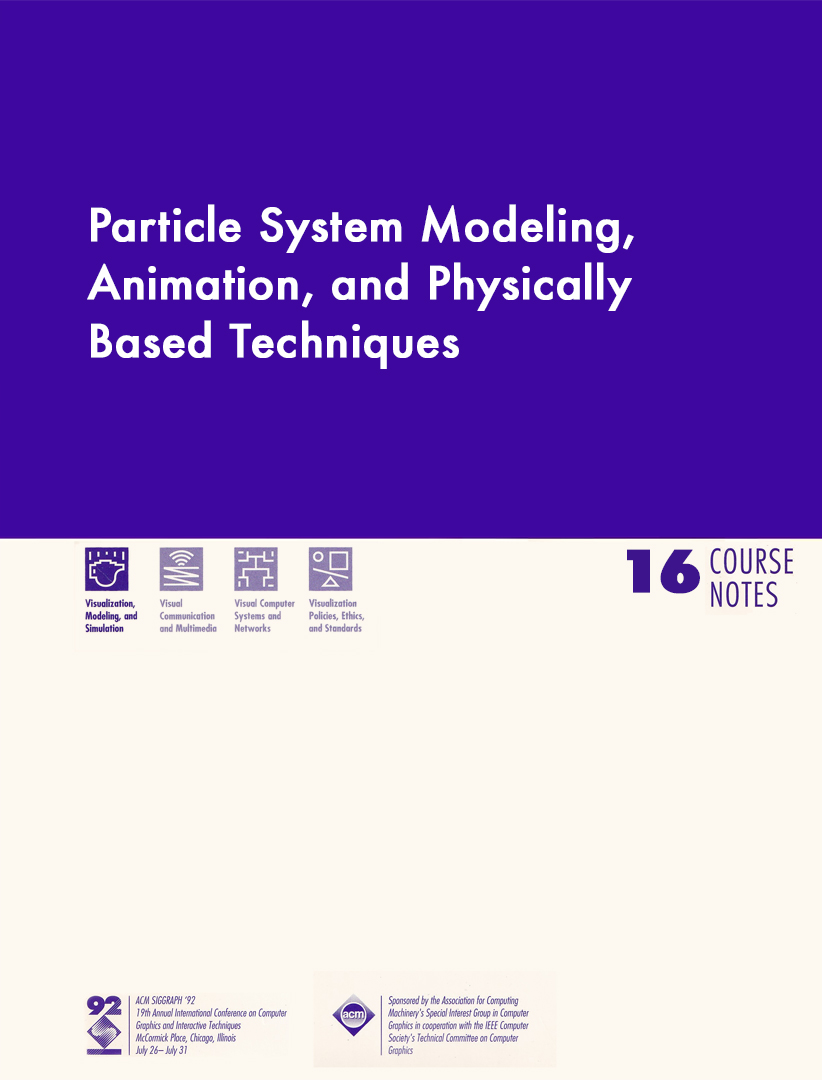“Particle System Modeling Animation and Physically Based Techniques” by House, Breen, Haumann, Reeves and Tonnesen
Conference:
Type(s):
Entry Number: 16
Title:
- Particle System Modeling Animation and Physically Based Techniques
Course Organizer(s):
Presenter(s)/Author(s):
Abstract:
Intermediate
Working knowledge of modeling and rendering techniques for computer graphics, and comfort with fundamental calculus for physics.
Who Should Attend
Implementors and researchers interested in the progression of ideas, techniques, and developments of particle systems for modeling highly deformable materials.
Objectives
The course introduces some of the latest work in particle-system modeling of highly complex phenomena using systems of mutually interacting particles. Students gain an understanding of particle-simulation tools and techniques, and learn which applications benefit from particle-system modeling.
Description
Particle systems have been used to model phenomena as diverse as fire and snow, grass and drifting leaves, liquid and draping cloth. This course moves from a retrospective to a tutorial on the latest uses of physically based techniques to model highly complex materials and phenomena.
Lecturers show how particles can be used at several levels of detail in choreographing animation. Examples of work incorporating particle-particle interactions range from modeling heat-dependent fluid flow to choreographing the draping behavior of woven cloth. Presentations are illustrated with sample animations.
Contents/Schedule PDF:
Contributed By:
- Mary Whitton
Location:
- Charles Babbage Institute Archives, University of Minnesota




